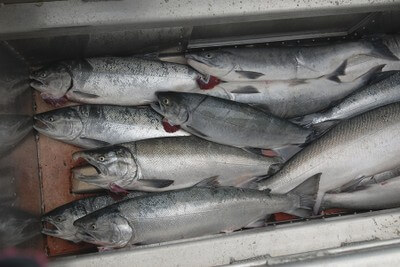Frequently Asked Questions About Our Salmon

Find out more about the Copper River Salmon that we sell in partnership with our friends at Sena Sea.
Q: When will fresh salmon be available?
A: The Copper River salmon fishery generally opens between mid to late May, but it varies from year to year. Only nature can tell these fish when it’s time for them to make their journey from the ocean up the river to spawn, but Alaska Department of Fish and Game does its best to estimate that date. The Copper River/Prince William Sound Marking Association and Cordova District Fishermen United make announcements when they have confirmation of a date, but the most direct source for information is ADF&G. For up-to-date information on Alaska commercial fishery news and announcements, visit http://www.adfg.alaska.gov/index.cfm?adfg=cfnews.main
Q: Your website says the price for fresh salmon is “market price.” What does that mean?
A: If you see “market price” on the Sena Sea web page, it means that the fishermen and the processors are still working on setting a stable market price. This usually happens at the beginning of the season, and we try to get a price on the website as soon as we are notified. In the meantime, simply place your order for the amount of salmon you want, and our partners at Sena Sea will e-mail you back with a quote and you can decide whether you wish to proceed with the order. The price will usually settle down shortly after Memorial Day Weekend, though it may still change throughout the season, usually going down as the peak of the run arrives at the mouth of the river.
Q: If I order now, when will I get my fish?
A: Sena Sea generally ships orders early in the week, since the first commercial fishing opener of each week is on a Monday. That means the fish will leave Alaska and be to your door by Thursday or Friday, depending on how far it has to travel. If you want your shipment delayed or other special instructions, please be sure to include a note with your order.
Q: I thought there was only one kind of “Copper River Salmon.” Now you’re telling me there are different kinds?
A: The Copper River is actually home to several different species of salmon. What most people call “Copper River Salmon” is the sockeye, or “red salmon,” with its brilliant crimson flesh. Even more prized is the king or Chinook salmon with its larger size and rich oily meat. Lesser-known but also popular with chefs are the coho or silver salmon, which run later in the summer and into fall, with sometimes lighter flesh than the sockeye but a more delicate flavor. There are also keta, sometimes called “chum” or “dog” salmon, and pink or “humpback salmon” which are generally sold canned at your local grocery store or in value-added products such as salmon patties.
Q: How fresh is the salmon from Sena Sea?
A: Sena Sea buys the fish straight from the fisherman, so this fish is going from the net to the boat where it is iced, to the processor who preps it for shipment, and straight to your door via Fed Ex. It’s as fair trade and as short a supply chain as you can get unless you come up to Alaska with a rod and reel and catch it yourself!
Q: Is Sena Sea’s Copper River salmon wild? Does it have Omega-3s?
A: This is not farmed fish. It is not raised in pens and fed by humans like catfish or tilapia. Some of the fish are born in Prince William Sound Aquaculture Corporation hatcheries and released into the wild when they are very young, but all Copper River salmon are ocean-raised and eat the same free-range wild foods. For more information on fisheries technology in the region, visit http://pwsac.com/faq/ All fish caught by Sena Sea fishermen are chock full of healthy Omega-3 fatty acids, accumulated from their diverse diet of ocean life.
Q: Is there a difference in quality between frozen salmon and fresh salmon?
A: Like any meat, fresh will always be the freshest-tasting, but frozen wild salmon is a high quality product. Today’s vacuum sealing and flash-freezing process preserves all the moisture and great flavor of salmon so you can enjoy salmon all winter long. Sena Sea fishermen practice quality handling on their boats, bleeding fish individually and icing them on the boat immediately. Salmon are filleted in the plant and then vacuum sealed in portion packs and flash frozen to lengthen their shelf life. The result is a product that is sealed from freezer burn and keeps well for several months so you still get to enjoy the flavor of rich, savory salmon even in the off-season.
Q: If I buy more salmon than I can eat, what’s the best way to save it for later?
A: We recommend vacuum-packing any uncooked portions using a home vacuum packing machine or putting in doubled plastic freezer bags and carefully squeezing out any extra air before freezing. (If your salmon does get a little freezer-burned, it can still be used for fishcakes, seafood sausage or salmon patties.) Cook from frozen or thaw in the refrigerator, not the microwave; salmon flesh is too delicate to go through a microwave defrost without affecting the quality. You can also experiment with smoking your own salmon, using the backyard smoker of your choice. Here’s a great recipe for the beginner: http://www.foodnetwork.com/recipes/alton-brown/smoked-salmon-recipe.html.
Q: What does “hot-smoked” mean?
A: Hot smoking means fish cured and smoked for a shorter time at a higher temperature so that it is cooked rather than smoked. The result is a slightly drier, flakier, more barbequed-like salmon that is cooked all the way through. It’s great for adding to creamy pasta or other recipes for a bit of salty contrast. The superiority of hot smoked vs. cold smoked is an age-old debate. Why not try both and see which you prefer?
Q: This salmon seems expensive! What do I get for my money?
A: Prices per pound do decrease slightly if you buy in larger quantities. For your money you get a delicious, sustainable product of superior quality delivered right to your door in a matter of a couple of days. You also get the knowledge that buying through us will support the habitat these fish need to thrive, ensuring this renewable resource will continue to be around for generations to come. We hope that you have nothing but the best experience ordering from us, and if you encounter anything short of that, please let us know or contact Sena Sea directly at (206)486-2344. We both welcome your feedback!


